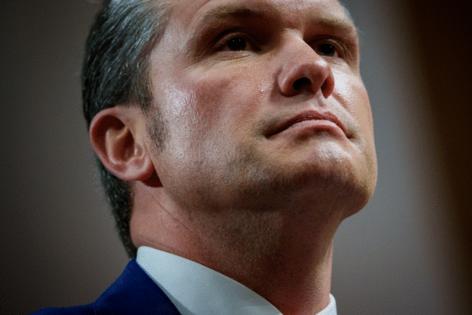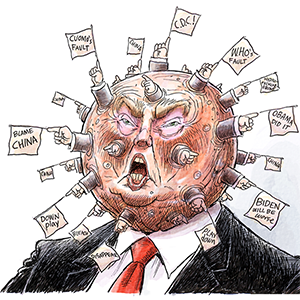US strikes kill 14 in eastern Pacific as Trump expands campaign against drug cartels
Published in News & Features
The United States launched three new lethal strikes against four vessels suspected of carrying drugs off the eastern Pacific coast of Latin America, killing 14 alleged “narco-terrorists” aboard vessels said to be linked to designated terrorist groups, according to a statement by Secretary of Defense Pete Hegseth.
The attacks bring to 57 the number of suspected traffickers killed since the Trump administration authorized the U.S. military to destroy boats believed to be smuggling narcotics to the United States. So far, 14 vessels have been hit since the operations began in early September.
In a post to his X account Tuesday morning, Hegseth said the four vessels were “known by our intelligence apparatus, transiting along known narco-trafficking routes, and carrying narcotics.”
According to the statement, the strikes killed 14 men aboard the vessels. One survivor was recovered, and Hegseth said Mexican search-and-rescue authorities took over after the U.S. Southern Command initiated standard rescue protocols.
“Eight male narco-terrorists were aboard the vessels during the first strike. Four male narco-terrorists were aboard the vessel during the second strike. Three male narco-terrorists were aboard the vessel during the third strike,” Hegseth wrote. “A total of 14 narco-terrorists were killed during the three strikes, with one survivor. All strikes were in international waters with no U.S. forces harmed.”
Hegseth described the operation as part of a broader shift in U.S. strategy against narcotics trafficking.
“The Department has spent over TWO DECADES defending other homelands. Now, we’re defending our own,” the statement said. “These narco-terrorists have killed more Americans than al-Qaida, and they will be treated the same. We will track them, we will network them, and then we will hunt and kill them.”
The post attributed the operation to direct orders from President Donald Trump. It also said U.S. Southern Command initiated the search and rescue for the survivor before transferring responsibility to Mexico.
The campaign has prompted growing questions about the legal authority for the use of lethal force against suspected traffickers in international waters. Human rights groups and legal experts have condemned the strikes as extrajudicial killings, while administration officials defend them by labeling cartel members as “unlawful combatants.”
Under international law, the use of force in another nation’s territorial waters generally requires consent or a recognized exception. Even in international waters, such actions may face scrutiny under self-defense and law-enforcement standards. Analysts warn that maritime strikes against non-state actors could trigger diplomatic backlash unless supported by clear evidence of an imminent threat.
Trump has repeatedly described Latin American drug cartels as a direct threat to U.S. national security and insists the strikes are lawful under his executive authority.
The maritime campaign comes amid a major U.S. military buildup in the Caribbean, just off the coast of Venezuela — whose top officials have long been accused by the U.S. Justice Department of running a state-embedded drug cartel.
Most of the strikes so far have targeted boats departing Venezuela, U.S. officials say. American intelligence agencies have for years claimed that senior members of Nicolás Maduro’s regime are connected to the Cartel de los Soles, accused of overseeing large-scale cocaine shipments from Venezuela to North America and Europe.
The operation coincides with the largest U.S. military deployment in the Caribbean in decades, aimed at disrupting regional drug networks. The initial phase includes a Marine air-ground task force aboard the amphibious assault ship USS Iwo Jima and two San Antonio-class transport ships, carrying more than 2,000 Marines for rapid-response missions.
In total, nearly 10,000 U.S. personnel — Marines and Navy — are now operating in the region, backed by a cruiser, several destroyers, and a Los Angeles-class attack submarine armed with precision-guided missiles. The administration has also ordered the world’s largest aircraft carrier, the USS Gerald R. Ford, to the Caribbean. Ten F-35 stealth fighters stationed in Puerto Rico provide the United States overwhelming air superiority over Venezuela’s aging fleet of Sukhoi Su-30s and F-16s.
_____
(McClatchy Washington Bureau reporter Emily Goodin contributed to this story.)
©2025 Miami Herald. Visit at miamiherald.com. Distributed by Tribune Content Agency, LLC.







Comments